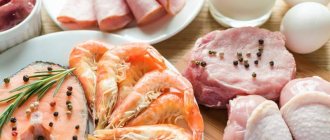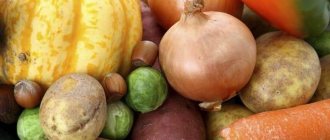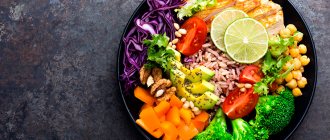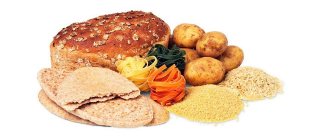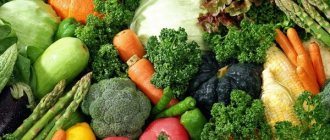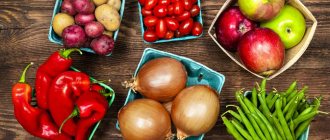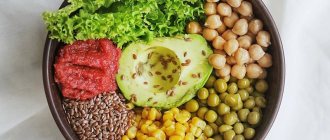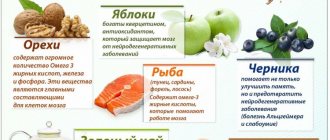The role of mucus in the human body
Even ancient healers considered mucus one of the important elements of the body. If a normal amount is produced, then the person is healthy. If the substance is in excess or, on the contrary, there is not enough, various diseases develop.
In the human body, many cells produce viscous substances. Their goal is to protect the cells of the lungs, gastrointestinal tract, and genitourinary system. Mucus is also produced to protect the ears and eyes.
Its main functions:
- acts as a barrier against bacteria and viruses;
- provides immunity;
- protects the walls of the stomach from aggressive hydrochloric acid and other substances contained in gastric juice;
- ensures the movement of feces through the intestines;
- promotes nutrient absorption;
- responsible for moisturizing and softening in the body;
- cleanses of everything unnecessary: envelops and pushes out.
The main substance of the gel-like substance is water, a small percentage is protein, antiseptics, and mineral salts.
Causes of mucus formation in the body
If mucus enters with food, it breaks down into glucose (like other sugars) and is absorbed. The body itself produces approximately 1.5 liters of mucus per day on mucous surfaces (nasopharynx, oral cavity, rectum), mainly due to the following reasons:
- with frequent overeating, unbalanced diet with a predominance of mucus-forming products;
- intestinal problems, constipation;
- inflammation, infectious diseases;
- harmful substances in the air that irritate the mucous membrane of the throat;
- plant pollen that provokes allergies;
- smoking;
- some medications and cosmetics.
If the mucus is removed in a timely manner, then nothing bad happens. If the body does not have time to cleanse itself, then the slippery mass accumulates, thickens, turns into waste and a haven for bacteria.
Quitting the diet
The results surprised many mucus diet advocates. A significant part of them consider this diet to be the only correct one and follow it all their lives.
Modern nutritionists do not agree with this statement and advocate a balanced diet. Let's take the example of a cow: we don't give her milk to increase her milk yield, we don't feed her so that she grows. Additional proteins, fats and carbohydrates are completely unsuitable for normal development.
Modern medicine one hundred percent refutes this statement: without the usual amount of nutrients, the body is depleted. It is advisable to use this diet as an additional measure if there are no contraindications.
To maintain the diet, it is recommended to follow the same method that was used to switch to the mucus diet. First, return dairy products, then grains, eggs and meat. Any product should be added to the menu gradually at intervals of 1-2 weeks.
The body's daily need for mucus
This amount is calculated based on carbohydrate requirements, since they are the main compounds responsible for the formation of mucus. The average consumption rate is 5-6 g of carbohydrates per kg of weight per day.
For an adult, this will be approximately 30-40 g. Therefore, when creating a menu, you should pay attention to the nutritional value and not get carried away with foods rich in sugars.
If a person has an ulcer or gastritis, his organs need additional protection, then foods that envelop and protect the gastric mucosa should be eaten in increased quantities.
On the contrary, if the body produces excess secretion, then you should not consume substances that form mucus in the intestines.
Ragnar Berg's table (with abbreviations)
Food of animal origin
| Name | Binds mucus and acids (percentage) | Produces mucus and acids (percentage) |
| Beef | – | 38,1 |
| Veal | – | 22,9 |
| Mutton | – | 20,3 |
| Pork | – | 12,4 |
| Smoked pork ham (hot smoked) | – | 6,95 |
| Bacon | – | 9,9 |
| Rabbit meat | – | 22,3 |
| Chicken, hen, goose | – | 24,3; 29,9; 30,7 |
| Offal (tongue, kidneys, liver, heart, brain, stomachs, testes, scallops) | – | 10,6-32,4 |
| Chicken eggs (yolk) | – | 51,8 |
| Goose eggs (yolk) | – | 59,6 |
| Pork lard | – | 4,33 |
| Goat's milk, cow's milk (with cream) | – | 0,65; 3,27 |
| Goat's milk, cow's milk (without cream) | – | 2,39; 4,89 |
| Cheese | – | 11,2-24,3 |
| Butter | – | 4,33 |
| Ghee | 5,6 | – |
Fish and seafood
| Name | Binds mucus and acids (percentage) | Produces mucus and acids (percentage) |
| White river fish | – | 2,7 |
| White sea fish | – | 6,9 |
| Salted herring | – | 17,35 |
| Red fish (trout, salmon, salmon, etc.) | – | 8,3-11,9 |
| Shell seafood | – | 19,6 |
| Oysters | 10,3 | – |
Vegetables and greens
| Name | Binds mucus and acids (percentage) | Produces mucus and acids (percentage) |
| Potato | – | 5,9 |
| Beet | 10,1 | – |
| Carrot | 11,9 | – |
| Celery (root and greens) | 11,3-5,8 | – |
| Turnip | 10,8 | – |
| White radish | 30,1 | – |
| Black radish | 39,4 | – |
| White cabbage, red cabbage | 4,2; 2,5 | – |
| Brussels sprouts | – | 13,4 |
| Kohlrabi | 5,9 | – |
| Cauliflower | 13,5 | – |
| Rhubarb | 8,9 | – |
| Spinach | 28,1 | – |
| Tomatoes | 13,6 | – |
| cucumbers | 13,9 | – |
| Dill | 19,6 | – |
| Leek | 11,8 | – |
| Onion | 1,9 – 8,2 | – |
| Pumpkin | 0,28 | – |
| Zucchini | 1,2 | – |
| Asparagus | 1,1 | – |
| Green beans | 8,7 | – |
Fruits, nuts and berries
| Name | Binds mucus and acids (percentage) | Produces mucus and acids (percentage) |
| Plum | 5,9 | – |
| Apple | 1,4 | – |
| Pear | 3,3 | – |
| Apricot | 4,8 | – |
| Peach | 5,4 | – |
| Cherry | 2,8 | – |
| Dates | 5,5 | – |
| Figs | 27,9 | – |
| Grapes and raisins | 7.5 and 15.1 | – |
| Raspberries | 5,2 | – |
| Orange | 9,6 | – |
| Lemon | 10 | – |
| Bananas | 4,5 | – |
| Olives and olives | 30.6 and 16.7 | – |
| Strawberries | 1,7 | – |
| Currant | 4,5 | – |
| Walnut | – | 9,3 |
| Coconut | 4,1 | |
| A pineapple | 3,6 | |
| Tangerines | 11,8 | |
| Chestnuts | – | 9,7 |
Beverages
| Name | Binds mucus and acids (percentage) | Produces mucus and acids (percentage) |
| Coffee (black) | 56,2 | – |
| Tea (black long tea) | 53,2 | – |
| Green tea) | 25,4 | – |
| Light beer | – | 26,2 |
| Porter and dark beers | 2,5 – 1,4 | – |
| Chicory | 7,2 | – |
| Cocoa | – | 4,7 |
| Dry white wine | 1,2 – 3,9 | – |
| Dry red wine | 2,4 – 4,3 | – |
| Strong grape spirits (cognac, brandy, etc.) | 18,9 – 25,7 | – |
All baked goods, as well as cereals and pasta, have the property of forming mucus. Lentils, dry peas, peanuts and other legumes contribute to its formation.
Signs of excess and lack of mucus in the body
When the diet contains a small amount of carbohydrates, then little gel-like substance is produced. The stomach will be the first to suffer from its lack, which leads to gastritis and indigestion.
Due to a decrease in the protective barrier of the nasopharynx, immunity decreases, a person more often gets the flu, and easily catches a cold. Against this background, lethargy, weakness, fatigue, apathy, and depression develop.
Excess mucus begins to accumulate in the respiratory system, stomach, and maxillary sinuses. The first manifestations of “too much” are a constant runny nose, a wet cough with sputum. This is how the body removes excess viscous mass.
Over time, they are joined by bronchitis, asthma, adenoids and other ENT diseases, and pneumonia. Also, an excess of mucus will be indicated by a swollen face in the morning, constant bags under the eyes, and increased salivation.
Excess weight can also be caused by an excessive amount of secretion that is not excreted.
Pros and cons of the mucus diet
- The body receives the necessary amount of glucose, removes toxins and harmful substances.
- Patients feel relief and a sharp increase in concentration.
- Over time, dieters begin to think positively and get rid of bad moods and irritability.
- Prolonged fasting can be dangerous for the body. It is better to consult a doctor.
- During the first stages of the diet, detoxification symptoms appear.
- The body does not receive protein, fat or minerals.
- Dental problems, dizziness, fatigue.
- The diet is difficult to maintain.
What foods form mucus in the human body
The most common causes of rhinitis are bacteria and viruses, but it can also be caused by an unbalanced diet, for example, mucus-forming foods. These include:
- milk, so snot from dairy products is not that uncommon in children;
- food rich in starch: potatoes, baked goods, noodles;
- among cereals: rice, oatmeal, legumes;
- pork;
- oysters, as well as seaweed;
- bananas, pumpkin, melon and mushrooms.
This list can be supplemented with medicinal herbs: marshmallow rhizomes, flax and plantain seeds, coltsfoot, orchis.
Ragnar Berg's table: products that form mucus in the human body table
In the tables of nutritionist Ragnar Berg, foods are divided into two groups. Some of them bind acids and promote the removal of mucus. This is the right food. The second group provokes the formation of acidic compounds and the release of secretions by the body. Such foods irritate the gastric mucosa and are best avoided or minimized in the diet.
Ragnar Berg's table
Ehret table: mucus-forming and mucusless foods
Nutritionist Arnold Ehret came to the conclusion that the most necessary substance for the human body is glucose. Meat and other animal proteins provoke excess mucus, which interferes with the normal absorption of the monosaccharide. Therefore, he compiled a scale of products based on their mucus-forming ability.
According to Ayurveda
Ayurveda is not so strict regarding food of animal origin. This science recommends not completely eliminating mucus-forming foods, but adding more spices to them, then excess secretion will not be released (Kapha will not go out of balance).
Diet for Kapha dosha (body constitution)
Nutrition and acid-base balance: myths and facts
Recently, quite often they talk about the acid-base balance of the body and its connection with health. There were also diets designed, according to active propagandists, to shift this balance towards less acidity and more alkalinity. Many people believe that this approach to nutrition helps them rejuvenate and prevent disease, and in some cases, cure disease. If you drink lemon juice to “alkalize” your body and for the same reason you gave up coffee, this article is for you.
The acid-base balance is not a fiction, but a very real state of homeostasis, extremely important for the normal functioning of living beings. The ratio of acid and alkali varies in different organs, tissues and fluids, but is quite strictly regulated. Our body maintains a certain constancy of its internal environment, and its disruption may be a risk factor for the development of new diseases.
Alkaline Diet Idea
The concept of the alkaline diet builds on these facts, but makes a loose assumption: food and the way it is prepared can have a direct impact on the acidity or alkalinity (pH level) of our body.
Within the framework of this concept, it is believed that the consumption of foods from the “alkalinizing” and “neutral” groups has a beneficial effect on the acid-base balance, since the food familiar to most supposedly excessively acidifies the body, turning it into a convenient target for the development of chronic diseases and the growth of cancerous tumors.
- “Acidifying” products include all animal proteins (meat, poultry, fish, dairy products), alcohol, coffee, soft drinks, refined industrially produced food, etc.
- Neutral foods include natural fats, whole grains and starchy vegetables, and sugar.
- Alkaline foods include fruits, vegetables, legumes, nuts and seeds.
Let me emphasize once again that the ability of food to directly “alkalize” or “acidify” our body is an assumption, a hypothesis. If you take a closer look at the body's natural process of maintaining homeostasis, you will find that this idea has some pretty weak links.
What is pH and how to measure it?
pH is a measure of the activity of hydrogen ions in a solution, and the degree of this activity tells us about its acidity. pH varies from 0 to 14. In this case, a value from 0 to 7 indicates the predominance of acid, 7 means that the solution is neutral, and a value from 7 to 14 indicates the predominance of alkali.
Proponents of an alkaline diet suggest you check this indicator by testing the acidity of your urine. Surely everyone remembers school chemistry lessons and litmus tests dipped into solutions. The stripes change color depending on the composition of the substance and tell us what is poured into the test tube. In a similar way, test strips are used to determine the composition of your discharge. According to the "alkaline" approach to nutrition, you can be happy if your urine test shows neutral or alkaline urine. High acidity is an alarm signal.
But the whole point is that different environments in our body have different pH values. For example, the esophagus contains a huge amount of acid, which processes food. The pH of the stomach ranges from 2 to 3.5 - and this is normal. On the other hand, blood pH is very tightly regulated at 7.35–7.45, meaning our blood is slightly alkaline. A change in the acid-base balance of the blood can be fatal, occurs under the influence of severe diseases and is completely unrelated to nutrition.
To maintain homeostasis, the body removes everything unnecessary with urine, for which it uses a special, rather complex mechanism. This liquid can have a fairly large variation in pH values, which do not mean anything except that the body does not need this or that substance right now. And excess excreted alkali only means its excess, but does not in any way characterize the pH balance of the body as a whole.
Osteoporosis
Followers of the alkaline diet also believe that the acidity of foods is the cause of osteoporosis, a progressive disease of the musculoskeletal system in which mineral content is washed out of bone tissue. For example, they think that a lack of calcium in the bones is due to its role in removing excess acid from the body. However, in reality, the kidneys and respiratory system are actively involved in this process, but bone tissue does not participate in it.
In addition, one of the proven causes of osteoporosis is the loss of collagen, which is associated with a lack of orthosilicic and ascorbic acids in the diet. Research shows no connection between the acidity of the diet or urine and bone strength. But diets rich in protein, on the contrary, have a beneficial effect on the health of the musculoskeletal system.
Cancer
Quite a lot of controversy revolves around the acid-base balance in the context of the prevention and treatment of cancer. Proponents of the alkaline diet argue that eliminating foods that “acidify” the body creates a more neutral environment in the body, which prevents the proliferation of cancer cells.
This thesis also has a number of shortcomings. First of all, as we already understood earlier, the idea of controlling the acidity of the “whole body” is very questionable. In addition, the ability of cancer cells to produce acid on their own has been proven in a volume that no food can neutralize. At the same time, cancer can develop in a neutral environment, which is confirmed by a number of laboratory studies.
What about teeth?
A healthy acid-base balance in saliva is maintained at a pH level of 5.6–7.9. Higher acidity can lead to tooth decay. Sudden changes in acidity or alkalinity in the oral cavity can also disrupt its microflora, which will negatively affect health.
Basic principles of the mucusless diet
Arnold Ehret's mucusless diet is based on the following theses:
- Eat only when you really feel hungry.
- Eat only vegetables and fruits, and in raw form.
- Set aside one day a week for fasting: completely fast, drink only water.
- Meals should be without mixing different foods.
You should change your diet gradually or practice an approach such as a cleansing diet for a week or 10 days. Read more about nutrition without mucus-forming foods in the article at the link.

